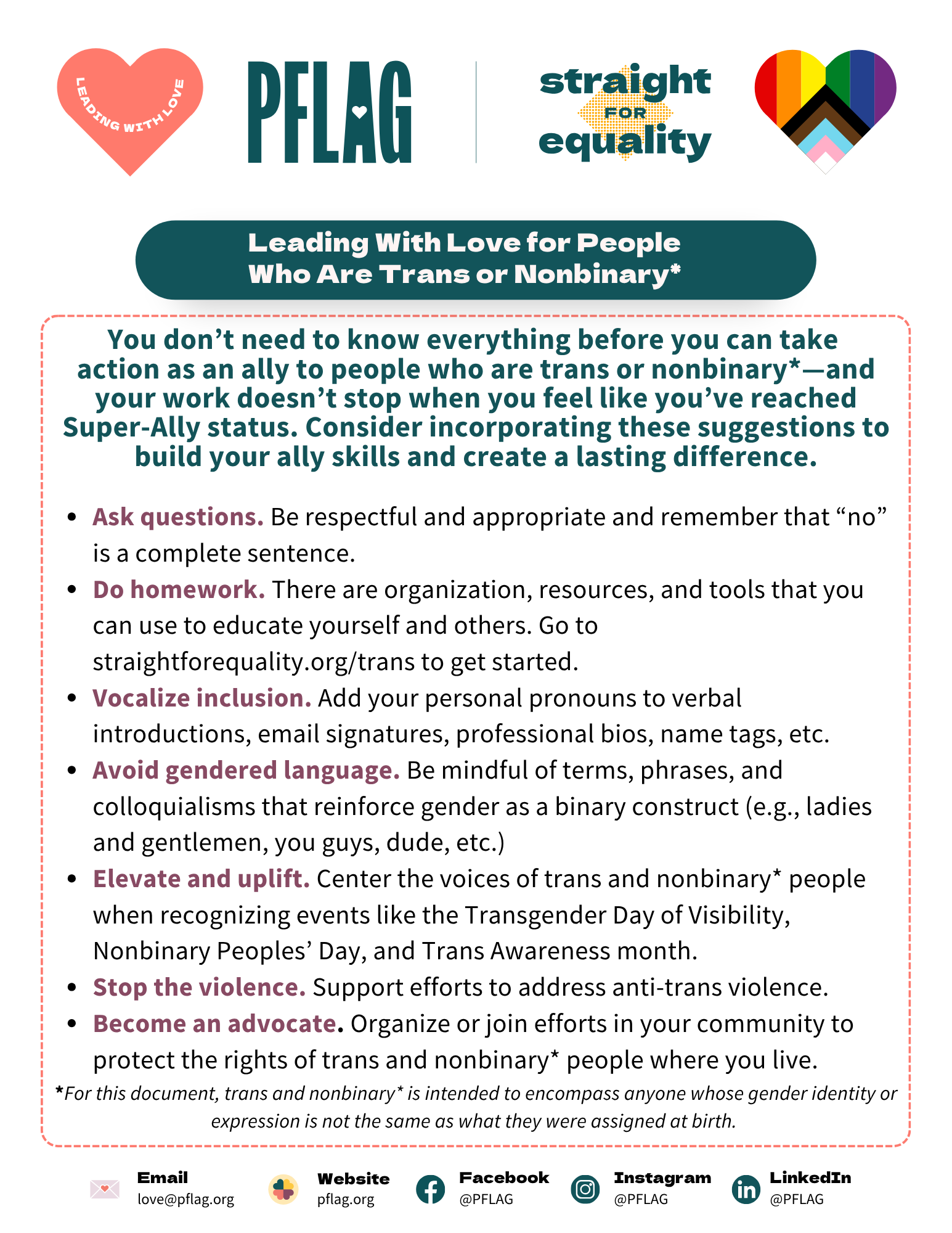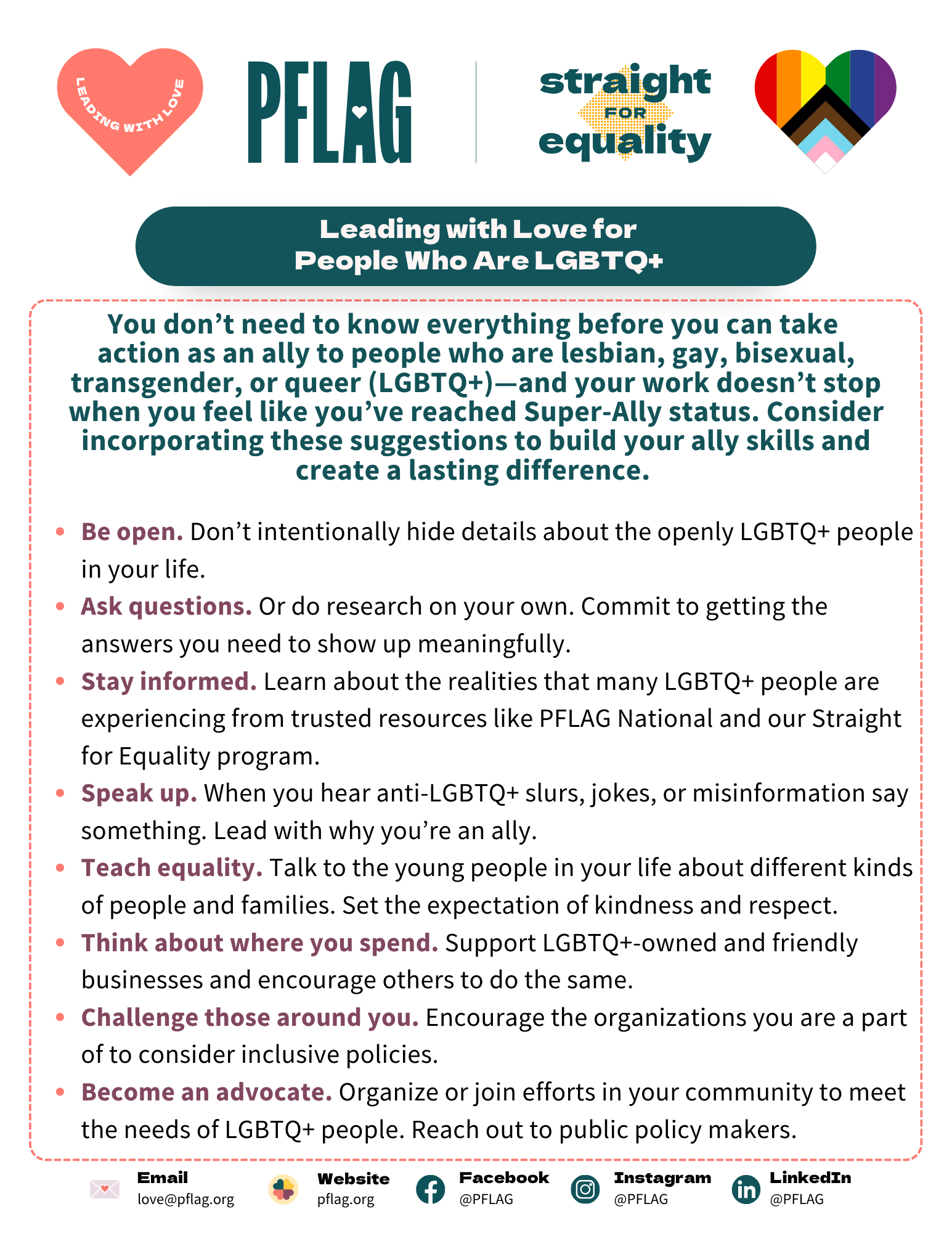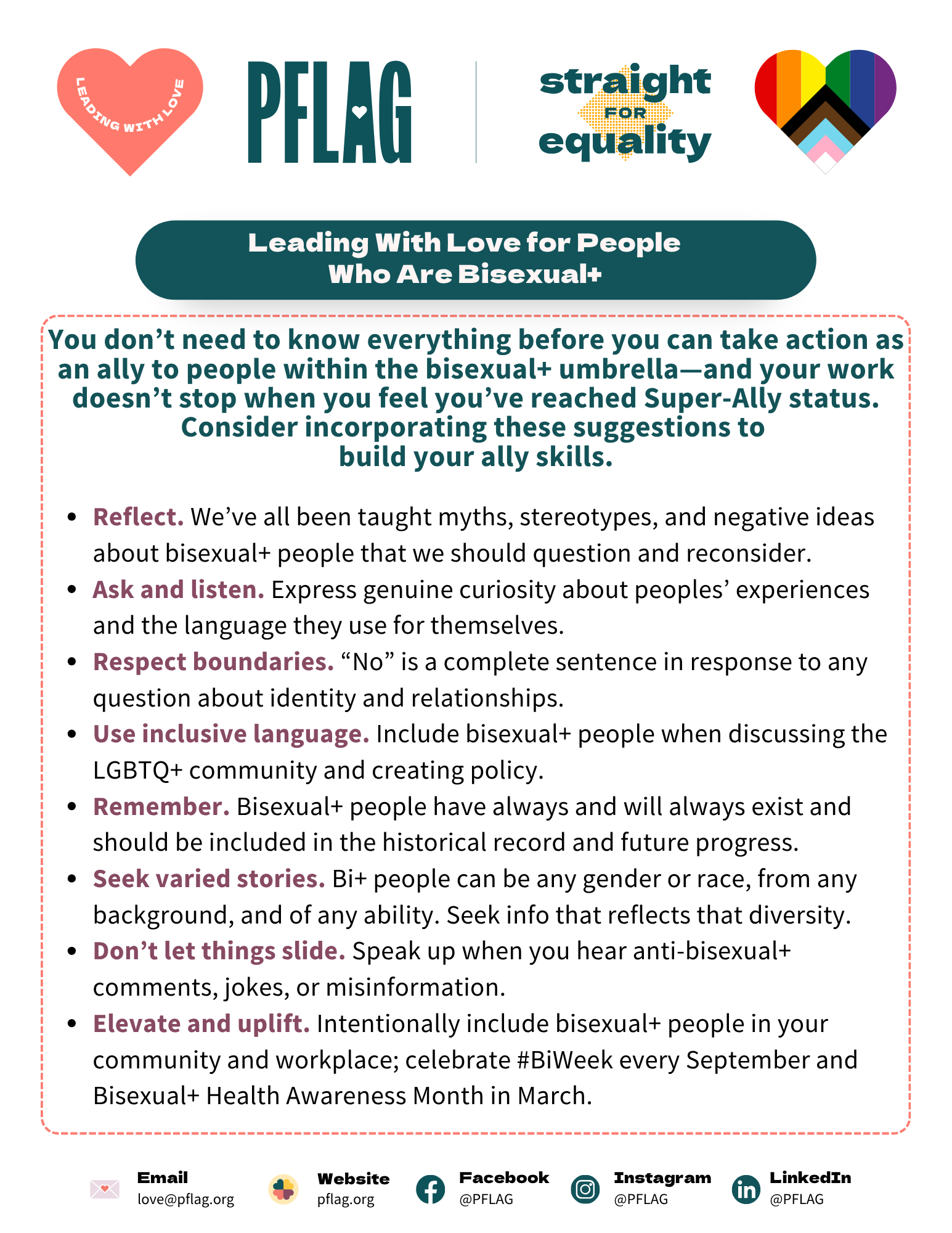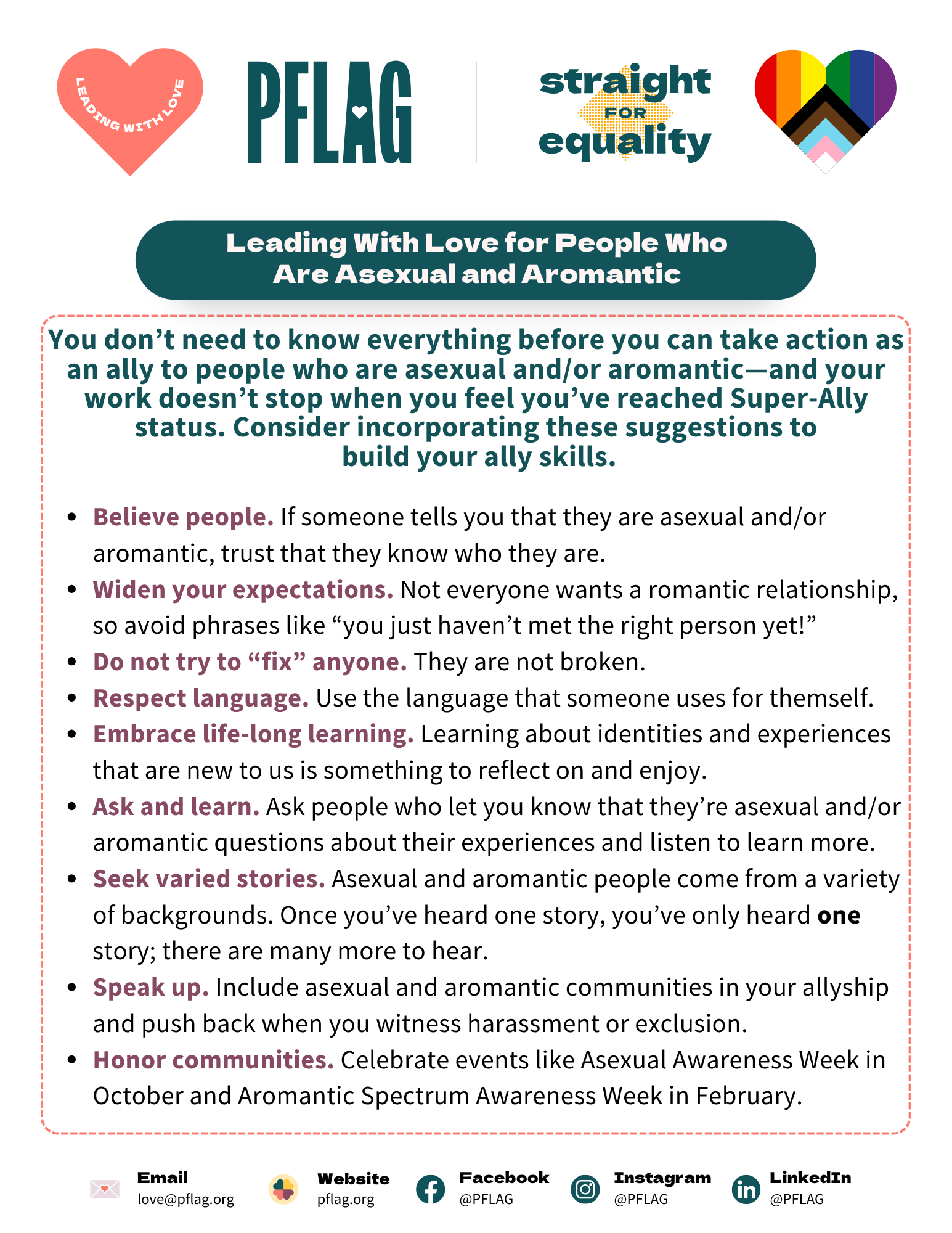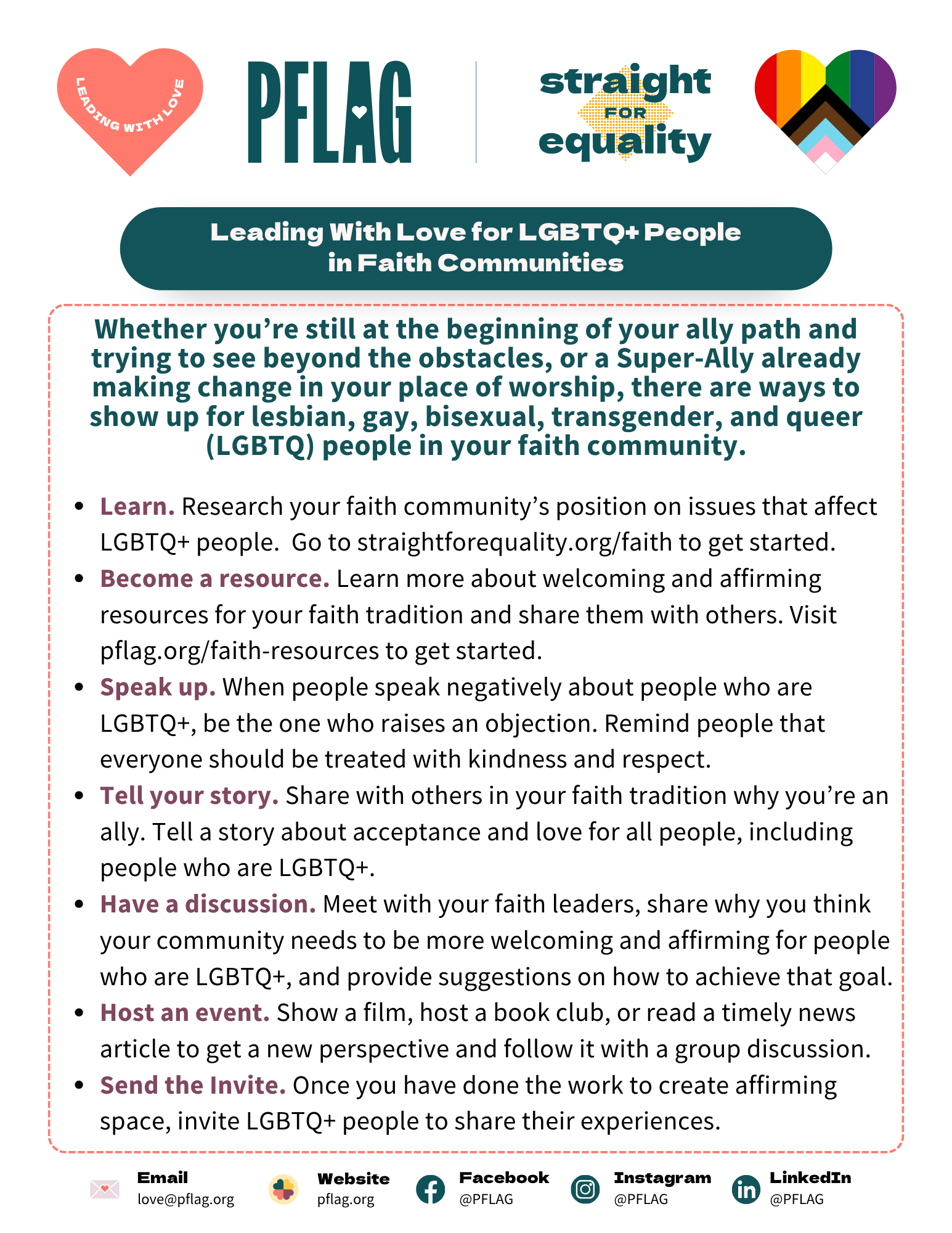- Ask questions. Be respectful, appropriate, and remember that “no” is a complete sentence.
- Do homework. There are organizations, resources, and tools that you can use to educate yourself and others. Go to straightforequality.org/trans to get started.
- Vocalize inclusion. Add your personal pronouns to verbal introductions, email signatures, professional bios, name tags, etc.
- Avoid gendered language. Be mindful of terms, phrases, and colloquialisms that reinforce gender as a binary construct (e.g., ladies and gentlemen, you guys, dude, etc.)
- Elevate and uplift. Center the voices of trans and nonbinary* people when recognizing events like the Transgender Day of Visibility, Nonbinary Peoples’ Day, and Trans Awareness month.
- Stop the violence. Support efforts to address anti-trans violence.
- Become an advocate. Organize or join efforts in your community to protect the rights of trans and nonbinary* people where you live.
*For this document, trans and nonbinary* is intended to encompass anyone whose gender identity or expression is not the same as what they were assigned at birth.
Download the PDF here. 